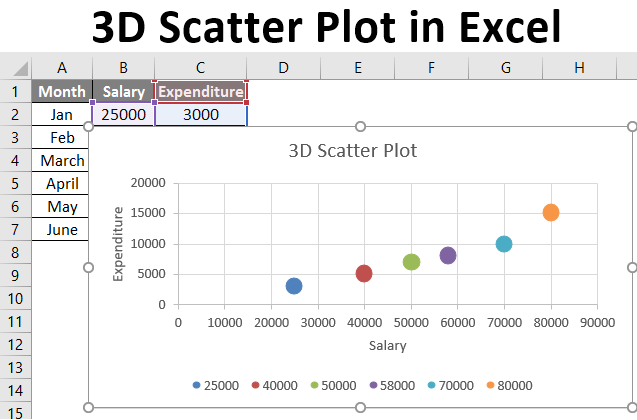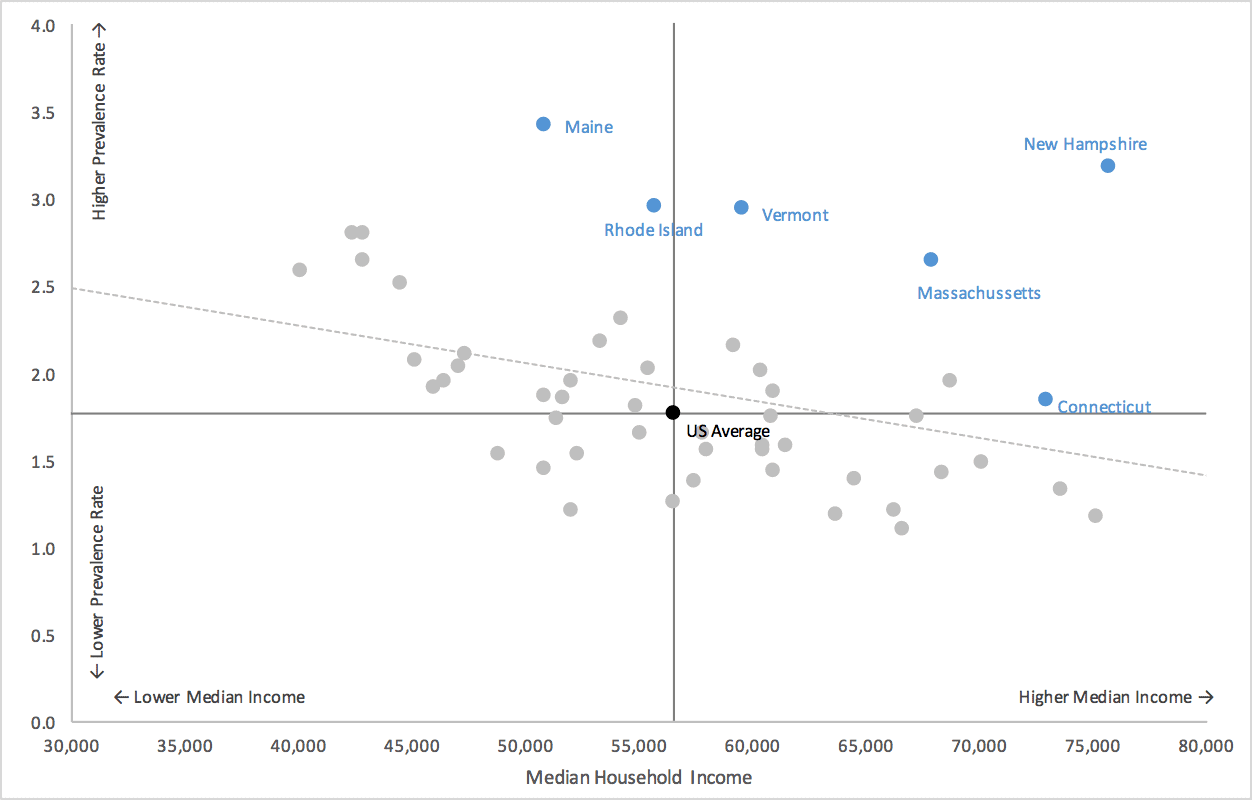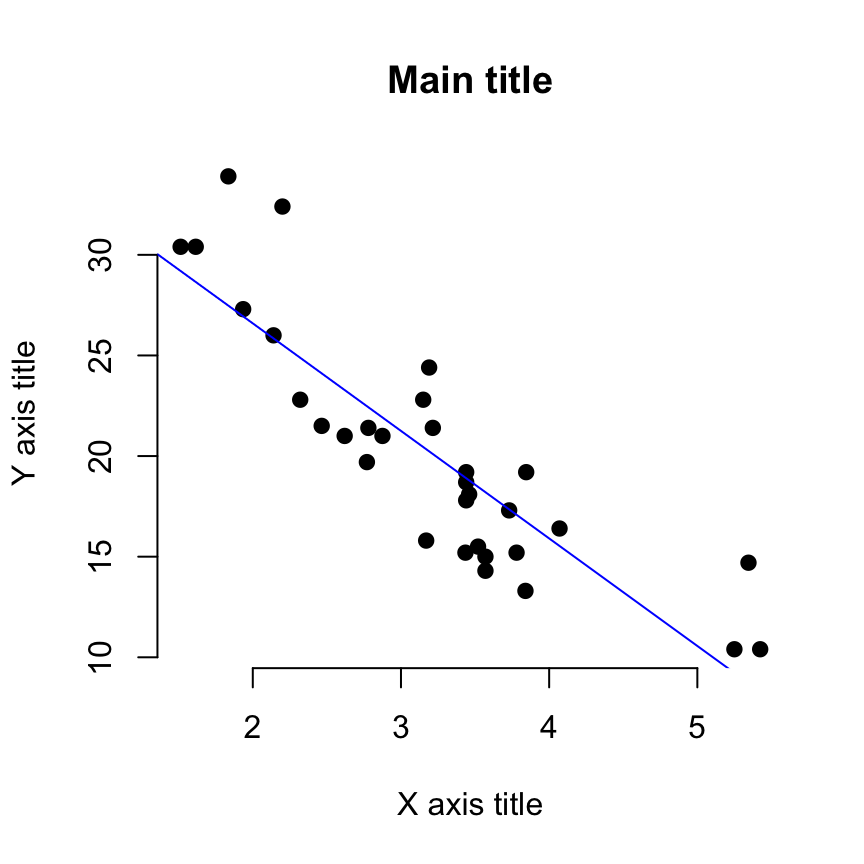

In the ‘Select Data Source’ dialog window, click the ‘Edit’ button. To do this, right-click on either of the axes and ‘Select Data’ from the drop-down. Switching Axes on a Scatter PlotĪ scatter chart usually shows the independent variable on the x-axis and the dependent variable on the y-axis, if you don’t like that, you can always switch the axis on the chart. If you’re wondering how an element changes the chart, just move your mouse over it and you will get a preview. Then, check the ‘Display Equation on chart’ option.Ī trendline and its equation are added to the chart and now the scatter plot looks like: You can also access this panel by right-clicking on the trendline and selecting the ‘Format Trendline’ option. To add an equation for the trendline that shows the relationship between the two variables, click ‘More Options’.Ī ‘Format Trendline’ pane will open on the right side of your Excel. In this case, we are choosing a ‘Linear’ trendline into the chart. Then, click ‘Trendline’ and choose the desired trendline option.
#SCATTER PLOT EXCEL PLUS#
To add a trendline, click the plus (+) symbol on the upper right side of the chart. Adding Trendline and Equation to Scatter ChartĪdding a trendline to the chart helps us understand the data better. We have added the titles ‘Temperature’ to X-axis and ‘Sales’ to Y-axis. Let’s add titles to the axes.Ĭlick the ‘+’ floating button, expand ‘Axis Titles’ and check the ‘Primary Horizontal’ and ‘Primary Vertical’ boxes to add titles to both axes. You can add or remove specific elements on the chart (such as Axes, Axis Titles, Data Labels, Error Bars, Gridlines, Legend, Trendline) using the ‘+’ sign floating button on the top right corner of the chart or from the ‘Design’ tab. Let’s set it to ‘100’.Īs you can see the gap is reduced and the scatter looks better now. The WIndow will automatically change to the chosen axis and shows its options.Ĭhange the minimum value of the ‘Bounds’ of the vertical axis. And to reduce the gap on the vertical axis, just click on the axis directly. To reduce the gap, change the ‘Bounds’ value. Here, you can format your axis using various options. To do that right-click on the horizontal axis and click ‘Format Axis’.Ī pane will open to the right side of the Excel. You can change that in the ‘Format axis’ pane. Formatting Axis on Scatter ChartĪs you can see there’s a gap of the first point on the left of both axes. We are choosing basic ‘Scatter chart’ for our data. You can select whatever chart type you prefer (Scatter, Scatter with Smooth Lines and Markers, Scatter with Smooth Lines, Scatter with Straight Lines and Markers, Scatter with Straight Lines, Bubble, or 3-D Bubble). Select your chart type from the drop-down options. Next, go to the ‘Insert’ tab and click on the ‘Scatter’ icon from the ‘Charts’ group on the Ribbon. Here are their sales figures for the last 13 days.įirst, select the two columns with data as shown in above picture.


As we already mentioned, a scatter chart represents the relationship between quantitative variables. The first step in creating a chart is creating a data set (table).
#SCATTER PLOT EXCEL HOW TO#
In this tutorial, we will give you step-by-step instructions on how to create a scatter plot/chart in Excel. Scatter plots work best when comparing values and showing how one variable affects the other. For instance, you can use a scatter chart to find out whether investments are associated with profits, whether cigarette smoking is related to cancer, or whether more studying is associated with high scores, etc.Ī scatter chart plots numerical data on two axes – independent variable on the horizontal axis and dependent variable on the vertical axis.

It is one of the most interesting and useful data visualization tools in Excel. It is also known as XY graph, scatter chart, scattergram. how one variable is affected by the other.Ī scatter plot is mainly used for representing the relationship or correlation between two numerical variables. Learn how to make a scatter chart in Excel to find the correlation between two variables, i.e.


 0 kommentar(er)
0 kommentar(er)
